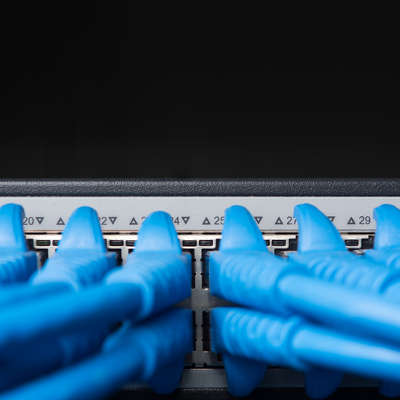Business computing relies on a physical infrastructure, including cabling and electrical lines. Setting up the cabling the right way is crucial, so planning is essential. It will take time and effort, but there are ways that you can make the process of cabling a network easier. This article will only be helpful if you are starting to implement a cabling strategy, or doing a major overhaul to a more dynamic one. When cabling a network it’s essential to get it correct the first time, because it’s not something you can just tweak to correct if it’s not quite right, or if you need to expand.
Consider Your Wired Endpoints
How many wired devices does your organization have that must be physically hooked up to your in-house network? Information to have to hand upfront will include all the wired endpoints you have, from servers to workstations. Plan to run twice as many cables as you think you’ll need. This may sound over the top, but you’ll save time and money in the long run. In the event that you need to implement new workstations or expand to a different area of your office, you’ll be less likely to run into cabling problems that are expensive to sort out down the line.
Ask Questions to Find the Right Setup
When cabling a network, you need to know exactly what you want to accomplish and what kind of property you are dealing with. You need a knowledge of the building specifications to avoid any major oversights. How large is your office? How many floors do you have? How many users do you have to accommodate? Do you want to go wireless? If so, do you know what materials the walls are made of? These are the types of questions (and there are many more) that have to be answered before you lay the first wire. Your best bet is to consult a floor plan to get the information you’ll need.
Consider the Future
Businesses, especially small businesses, are often more focused on keeping the lights on and creating profitability than considering what will happen if everything goes well for the next few years. That’s very practical, because if you don’t focus on the here and now then there won’t be a future to consider. However, that doesn’t justify short-term thinking.
You never quite know when success is going to come. For a growing business, considering the flexibility of your IT is essential when cabling a network for your business. Your needs may change. You may not only expand your operations and staff; you may also need to accommodate new technology and ways of working.
Follow Best Practices
Running cable has its own best practices. For example, Cat5 cables should not be run alongside electrical cables. They shouldn’t be placed at 90-degree angles. Different cables are made of different materials, and keeping that in mind is essential to complete an exemplary cabling job.
If you’d like more information about cabling a network, wireless solutions, and enterprise-level IT support call Quikteks today at (973) 882-4644.

